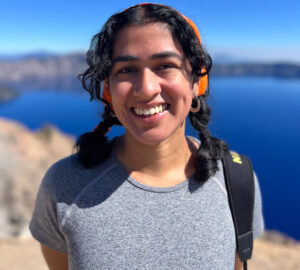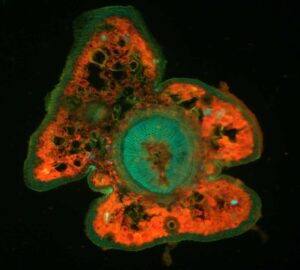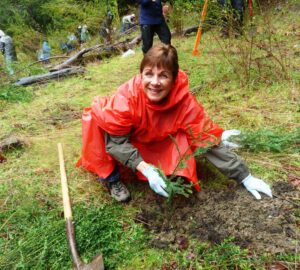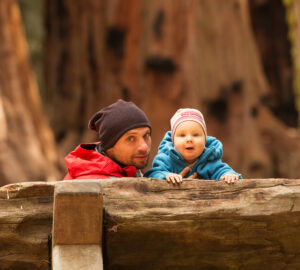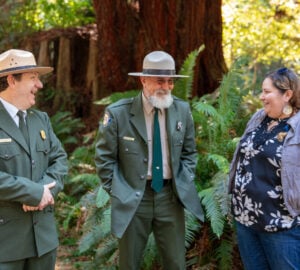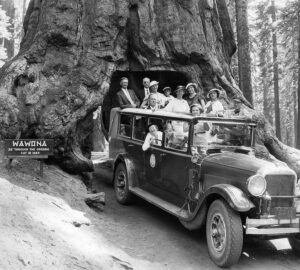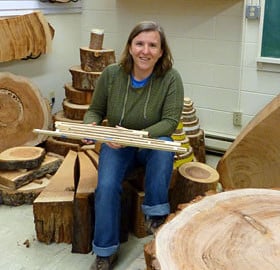
Dendrochronologists have studied growth rings of giant sequoia rings before. But they’ve found it harder to interpret coast redwoods. There can be hundreds of rings in just a few inches, and those rings are often distorted, with many years’ growth absent entirely. At the base of the tree, researchers’ measuring tools, “increment borers,” rarely can reach the center of the tree. So tree-ring readers generally stuck to less challenging species.
A few years ago, however, some tree-climbing researchers at Humboldt State University began sampling the less distorted tree rings higher up in the coast redwood canopy. They recruited Carroll, trained at Columbia University, to analyze the pencil-thin cores.
Now, three years later, Carroll has evidence of what conditions were like in sequoia and coast redwood forests as far back as 1000 A.D. She also has hints from a limited number of trees going back to 328 A.D. Carroll enriched the sequoia data base and filled a huge gap in knowledge of coast redwoods, whose tree-ring history previously ended at 1750.
Getting that story hasn’t been easy. Carroll has measured half a million tree rings, comparing 1,466 core samples from 120 coast redwoods and sequoias. Comparing patterns of wide and narrow years enables her to “cross-date” trees from sample to sample.
Carroll also looks at historical weather data, which goes back to 1895. The year 1983 was wet from El Nino, for example. That year’s rings tend to be thick across the entire redwood range. The years 1924 and 1977 were drought years, and their rings are usually thin.
“Having chronologies across the range allows us to understand their growth histories and how they respond to different climatic conditions,” Carroll said. “Fire histories can be improved and climate reconstructions may be possible.”
That information could be useful for forest managers and organizations including Save the Redwoods League that are trying to determine how often fires have occurred in the past or where preserves should be expanded as climate changes. Learn more about Allyson’s work and how it fits into the League’s Redwoods and Climate Change Initiative.


